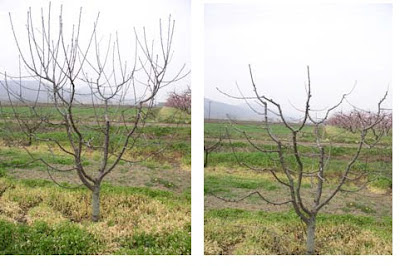The sensorial features of table olives is determined directly by our sensorial organs, and impinge on the aspect, color, shape and size of this fruit, but also on the smell, taste, oral sensations that are perceived by tasting it. These are important evaluations, because the tasting technique is clearly based on the training of the sensitivity of our taste.
Now, besides the outside aspect (shape, size, consistency and color), the flavor, that is to say the whole of the smell, taste, tactile and kinesthetic perceptions, can identify and classify the sensorial profile of each olive. Having a general idea of the sensations can contribute to define, with good detail, the quality of the product in the eyes of the consumer who will buy it.
The INTERNATIONAL OLIVE OIL COUNCIL ( IOC )method for tasting table olives
The olive samples to analyze are collected in tulip glasses, which are traditionally used in oil tasting. The olives tasting normally take place at ambient temperature, around 20-22°C (68-72 F). If olives are in the brine, it is necessary that the liquid covers all fruits in the glass. however, before tasting, it is needed to know the list of descriptors formulated by IOC.
GLOSSARY
It is an authentic vocabulary, which can allow a meticulous assessment of the taste of table olives. As regards the evaluation form, a non structured scale is used, which includes the main attributes that define the sensorial quality.
- Acid: the taste sensation that qualifies the basic flavor determined by watery solutions of acid substances, such as citric, lactic and tartaric acid. It is typical of fermented olives.
- Adhesion: it is referred to the adherence of the flesh to the pit, indicating the resistance of the flesh to being detached from the pit, which can represent a defect
- Bitter: sensation typical of water solutions of substances such as quinin, caffeine, and others
- Aroma: the whole of perceptions related to the smell, both via direct smelling and retronasal perception; it reflects the transformation process of the olives
- Aspect: the global vision of the drupe, which can assess the integrity of the fruit, with special attention to the external layer of skin, considering the homogeneity of the caliber, the uniformity, dimension, and size of the olive. Defects include superficial abrasions, deformations, lack of homogeneity, abnormal spots, skin hardening (unless in the case of olives in the brine), gas bubbles, insects punctures.
- Color: intensity, and uniformity are considered, with respect to the outside surface of the fruit, that is to say the variety of the fruit, its maturation and the preparation technology.
- Crunchiness: kinesthetic property related to the strength which is necessary to break into pieces the olive with the molar teeth.
- Sweetness: sensation typical of water solutions of substance that do not give any sensation of bitterness.
- Hardness: tactile-kinesthetic property correlated to the strength which is necessary to press the olive between thumb and index finger. It can be low, medium, high. It is also the sensation perceived by the teeth: soft, firm or hard.
- Skin hardness: defect related to the hardness to break the skin when pressing with the incisor teeth
- Abnormal fermentation: Smelling sensation, perceived either directly or by retro nasal sensation, typical of putrid and butyric fermentation and of zapateria, provoked by Clostridium bacteria. It reminds of the odor of organic substance that are undergoing decomposition, such as butter, rotten leather, etc.
- Fibrous: defect due to the sensation of wooden flesh perceived while chewing the fruit.
- Cheese: smelling sensation typical of cheese, due to an abnormal fermentation of proteins.
- Taste: taste sensation typical of the transformation that the olive underwent. The receptors that are responsible for identifying the taste are localized in the mouth, especially on the tongue, and are activated by the compounds in solution while chewing the olive. The taste can identify one of the four basic flavors: sweet, salty, bitter, acid.
- Metallic: defect due to an excessive content in iron, caused by the preparation process of the olive
- Sludge: defect that is due to the flavor typical of sedimentation mud’s
- Mould: defect typical of the bad smell of olives which are affected by moulds and yeasts, after a prolonged conservation in excessively humid conditions, prior to the preparation of the olive
- Pasteurized: smell defect of the olives which underwent an xcessive thermal treatment
- Hot: prickly and aggressive tactile sensation, perceived in the oral cavity.
- Receptor: structure specialized to receive a stimulus in an excitable sensorial organ and convert it into a nervous flux.
- Rancid: smell defect typical of olives in an advanced oxidation state
- Salty: sensation typical of water solutions of salts such as sodium chloride
- Soapy: sensation that reminds the soap
- Spiccagnolo: term that indicates the easiness for the flesh to be detached from the pit
- Wine-vinaigre-like: smell defect typical of olives that were affected by fermentation, with the production of acetic acid, ethyl acetate and ethanol.
- Zapatería: defect typical of an unpleasant smell and taste, similar to the leather, due to bacteria Clostridium e Propionibacterium.
TASTING KEY STEPS
Once the terminology has been acquired, here are the steps to follow during olive tasting:
- The tasting temperature of the olives has to be in the range 20-22°C (68-72 F).
- The olives are put in the tulip glass used for oil tasting, using wooden or metal toothpicks.
- The number of olives to put in each glass depends on their caliber, from about 7 (small and medium size olives), to 2 or 3.
- Assess the aspect of olives.
- Assess the smell, taste and retrosmell properties of the fruit, by chewing.
- Assess the structure and consistency of the olives, by chewing.
- Fill the evaluation form, grading the intensity of the perceptions, on a scale from 0 to 10.















